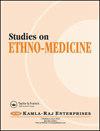空腹血糖(FBG)对脂代谢的影响以及印度北部2型糖尿病成人血脂异常模式的性别差异
Q2 Social Sciences
引用次数: 6
摘要
本研究旨在探讨高血糖对2型糖尿病患者血脂成分的影响,并评价2型糖尿病患者血脂异常的性别差异。对680例空腹血糖水平(空腹血糖<126 mg/dl,空腹血糖≥126 mg/dl)的糖尿病患者(男340例,女340例)进行血清甘油三酯、总胆固醇、LDL、HDL、VLDL的检测。如果患者的一个或多个参数(TG、HDL或LDL)超出美国糖尿病协会(ADA)推荐的目标,则认为患者患有血脂异常。空腹血糖(FBG)≥126 mg/dl的受试者血脂组分水平异常,FBG与TG (r=0.3)、TC (r=0.3)、HDL (r=0.2)、LDL (r=0.2)、VLDL (r=0.2)呈正相关。男性和女性的血脂异常患病率分别为97.6%和89.9%。血脂异常合并高LDL和高TG是男性中最常见的模式,而女性中孤立的高LDL,分别占血脂异常患者的43.8%和18.2%。血脂异常是糖尿病最常见的并发症,空腹血糖高的患者血脂值更紊乱,提示血糖控制不良与血脂异常有关。本文章由计算机程序翻译,如有差异,请以英文原文为准。
Effect of Fasting Blood Glucose (FBG) on Lipid Metabolism and Gender Differences in the Pattern of Dyslipidemia in Adults with Type 2 Diabetes in Northern India
ABSTRACT The present study aims to explore the effect of hyperglycemia on lipid profile components of type 2 diabetes patients and to evaluate the gender differences in the lipid abnormalities in type 2 diabetes. A total of 680 diabetic patients (340 males and 340 females) with fasting blood glucose level (fasting glucose <126 mg/dl and with fasting blood glucose ≥126 mg/dl) were analyzed for serum triglycerides, total cholesterol, LDL, HDL and VLDL. The patients who had one or more parameters (TG, HDL or LDL) outside the targets recommended by American Diabetes Association (ADA) were considered to have dyslipidemia. The subjects with fasting blood glucose (FBG) ≥126 mg/dl had more deranged levels of lipid profile components and there was a positive significant correlation of FBG with TG (r=0.3), TC (r=0.3), HDL (r=0.2), LDL (r=0.2) and VLDL (r=0.2). The prevalence of dyslipidemia in males and females were 97.6 percent and 89.9 percent, respectively. Combined dyslipidemia with high LDL and high TG was the most common pattern among males and isolated high LDL among females, contributing to 43.8 percent and 18.2 percent of patients with dyslipidemia, respectively. Dyslipidemia is the commonest complication of diabetes mellitus and the patients with high FBG had more deranged lipid values indicating that poor glycemic control is associated with abnormal lipid profile.
求助全文
通过发布文献求助,成功后即可免费获取论文全文。
去求助
来源期刊

Studies on Ethno-Medicine
Social Sciences-Cultural Studies
CiteScore
0.50
自引率
0.00%
发文量
13
期刊介绍:
Studies on Ethno-Medicine is a peer reviewed, internationally circulated journal. It publishes reports of original research, theoretical articles, timely reviews, brief communications, book reviews and other publications in the interdisciplinary field of ethno-medicine. The journal serves as a forum for physical, social and life scientists as well as for health professionals. The transdisciplinary areas covered by this journal include, but are not limited to, Physical Sciences, Anthropology, Sociology, Geography, Life Sciences, Environmental Sciences, Botany, Agriculture, Home Science, Zoology, Genetics, Biology, Medical Sciences, Public Health, Demography and Epidemiology. The journal publishes basic, applied and methodologically oriented research from all such areas. The journal is committed to prompt review, and priority publication is given to manuscripts with novel or timely findings, and to manuscript of unusual interest. Further, the manuscripts are categorised under three types, namely - Regular articles, Short Communications and Reviews. The researchers are invited to submit original papers in English (papers published elsewhere or under consideration elsewhere shall not be considered).
 求助内容:
求助内容: 应助结果提醒方式:
应助结果提醒方式:


